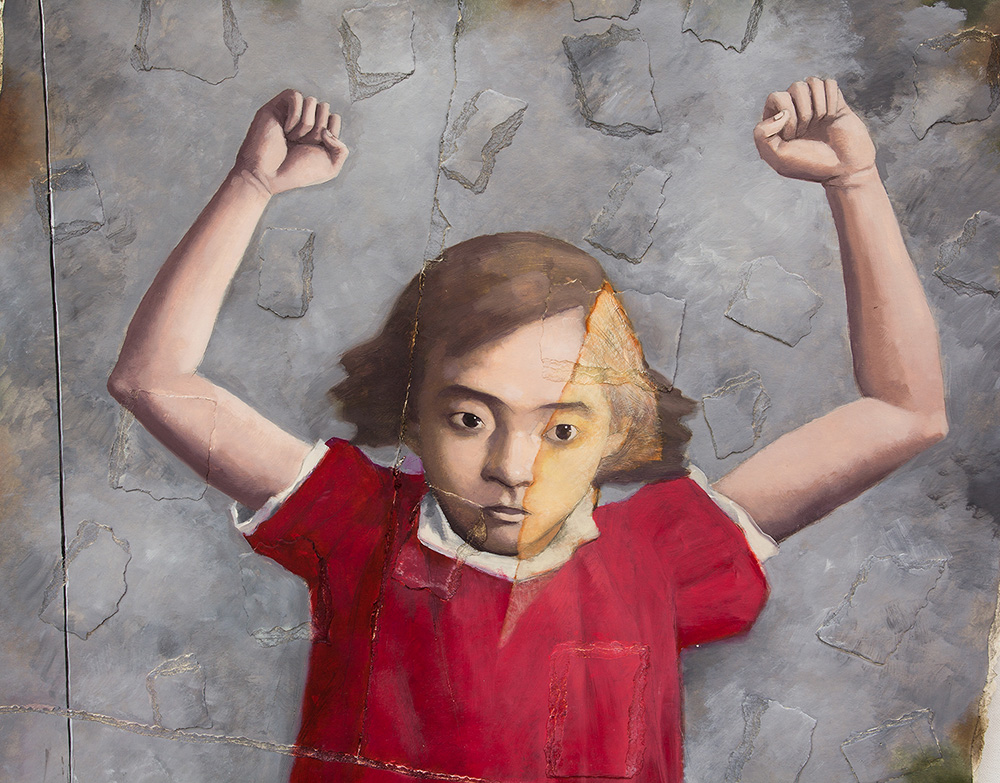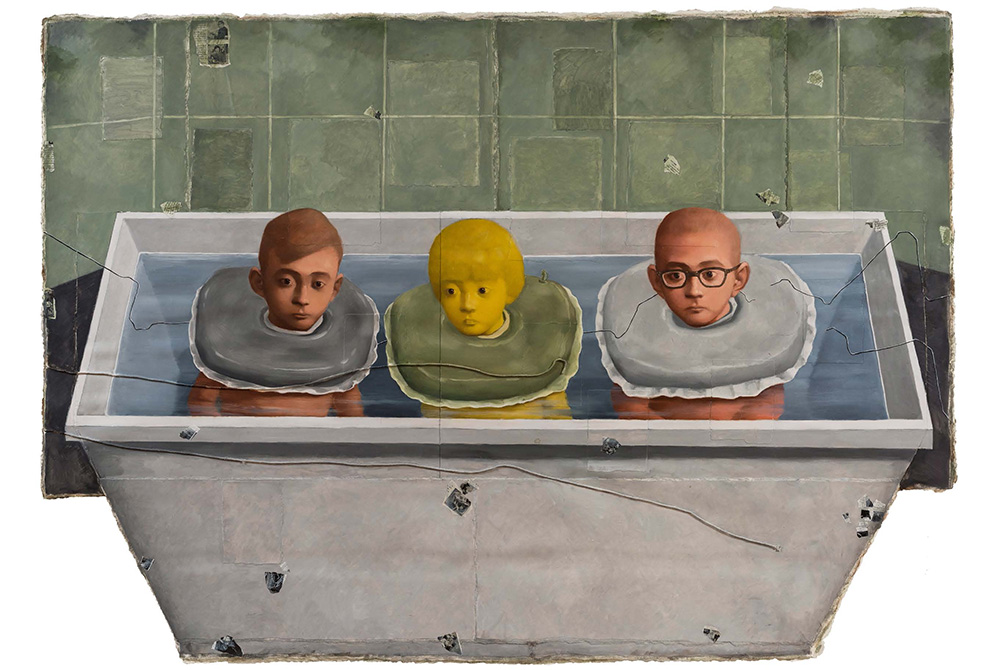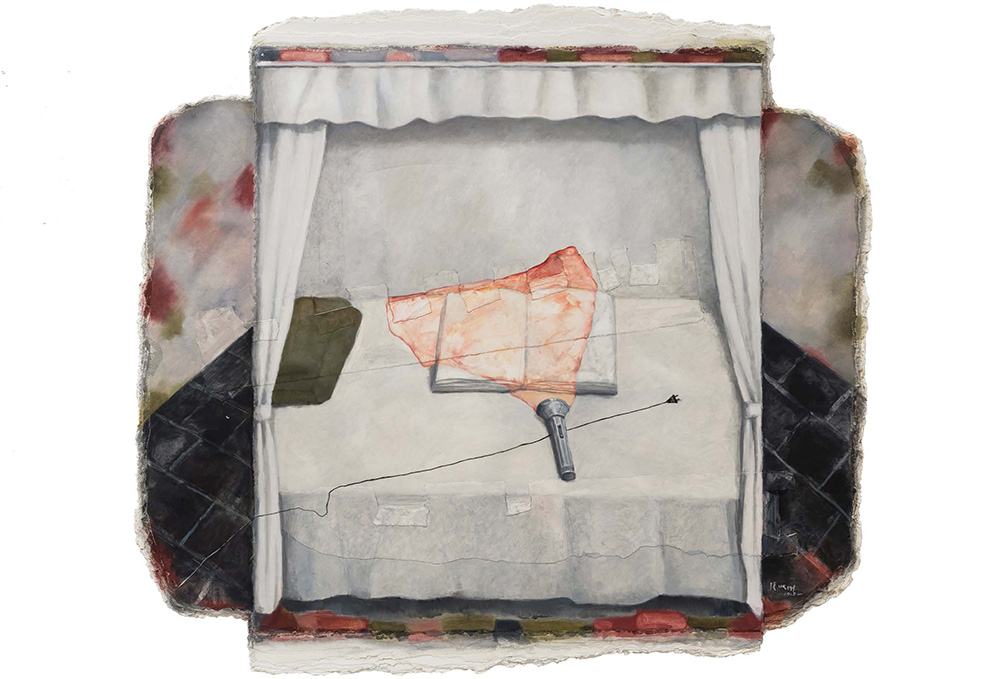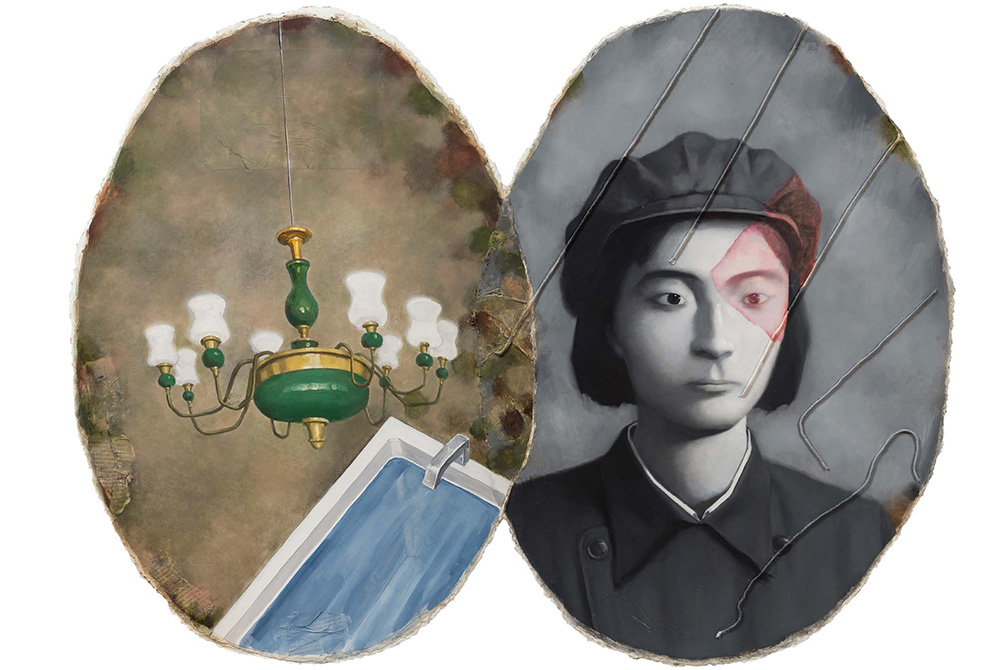ART CITIES:N.York-Zhang Xiaogang
 Zhang Xiaogang is one of the driving forces behind the Chinese Avant-Garde movement which originally gained strength in the 1980s. Like many Chinese artists of his generation, Zhang was caught up in Mao’s Cultural Revolution (1966-1976). A chance discovery of old photos on a visit to his family home provided him a powerful inspiration that led to his representative “Bloodline” series.
Zhang Xiaogang is one of the driving forces behind the Chinese Avant-Garde movement which originally gained strength in the 1980s. Like many Chinese artists of his generation, Zhang was caught up in Mao’s Cultural Revolution (1966-1976). A chance discovery of old photos on a visit to his family home provided him a powerful inspiration that led to his representative “Bloodline” series.
By Dimitris Lempesis
Photo: Pace Gallery Archive
Zhang Xiaogang’s Z has experienced firsthand the many changes affecting contemporary China and he has explored these extensively in his practice, from Mao’s Cultural Revolution, the opening up of China to the West in the 1980s, through the post-Tiananmen Square era of the 1990s and its economic boom in the 21st Century. Zhang Xiaogang in his solo exhibition “Recent Works” at Pace Gallery in New York, presents eleven oil paintings. Zhang Xiaogang was born in 1958 in Kunming, the capital of Yunnan Province in southern China. Having grown up during the Cultural Revolution, Zhang Xiaogang explores themes of memory and individual identity in the context of Chinese collectivism. After initially working in an expressionist style with a surrealist iconography, in 1993 Xiaogang began a series of portraits, “Bloodline-A Big Family” which made him famous internationally. Basing his work around the concept of family: immediate, extended, and societal, Zhang Xiaogang’s portraits depict an endless genealogy of imagined forebears and progenitors, each unnervingly similar and distinguished by minute difference. The paintings in the exhibition “Recent Works” build on Zhang Xiaogang’s long-held interest in portraiture and narrative imagery with domestic scenes as his primary subject matter. In these recent works, a new compositional dynamic has emerged through the figures. In the artist’s earlier figurative portrait series, the subjects are presented in group formations. In these new portraits, a powerful weightlessness or instability emerges. The figures drift upon the canvas projecting a sense of isolation and alienation from their environments. With the new series, the artist has introduced collaged compositions into his practice, tearing and layering the paper material into textured works that emphasize the fragmentary nature of memory. The collage technique merges with the act of painting, with the two presenting corresponding executions of both physical and cerebral creation. Both the technical and figurative composition of the works reflect the artist’s broad interrogation of the nature of painting as a physical manifestation of the unconscious and as interpretive of individual and collective memory.
Info: Pace Gallery, 537 West 24th Street, New York, Duration: 7/9-20/10/18, Days & Hours: Tue-Sat 10:00-18:00, www.pacegallery.com



